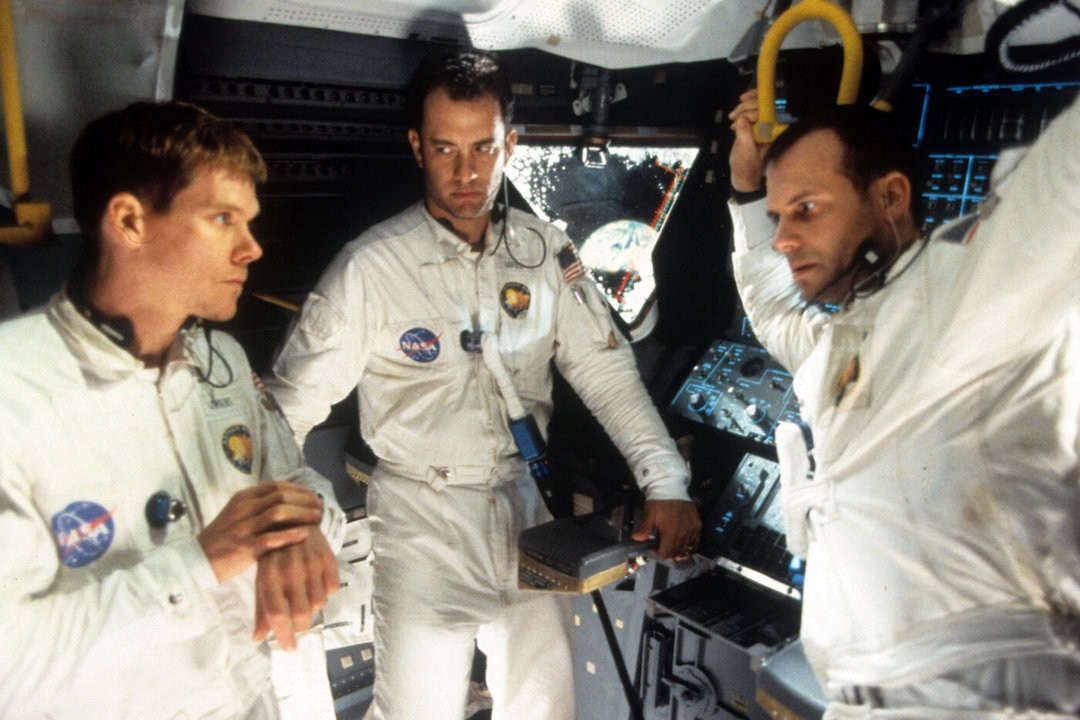Create a free profile to get unlimited access to exclusive videos, sweepstakes, and more!
What we know about the damaged Soyuz capsule and what's next for the ISS crew?
Every once in a while the universe gives us a hubris check.

Space travel can be dangerous. In fact, it’s almost an active rebellion against inherent danger. In the history of human space travel, never has that been more clear than during the famed ill-fated flight of Apollo 13. An oxygen explosion about 56 hours into the mission threatened the mission and the lives of the crew, leading to a tense return journey involving a slingshot Hail Mary around the Moon. This tale of real-life heroism at the edge of space was captured in perhaps the best space movie of all time, Ron Howard’s Apollo 13.
With Artemis I in the history books, and Artemis II and III on the horizon, the potential pitfalls of a return to the Moon are in the air, but things can go wrong even closer to home. That’s a fact we were all reminded of when a leak was detected aboard the Soyuz capsule attached to the International Space Station on Wednesday. The Roscosmos Soyuz Ms-22 launched from Russia Sept. 21 and ferried astronaut Frank Rubio and cosmonauts Sergey Prokopyev and Dmitri Petelin to the station. It has been docked there, attached to the Rassvet module, since then and was planned to be their ride home in March of next year. That was before coolant started leaking from an external radiator cooling loop.
Cosmonauts were preparing for a space walk Wednesday night, already positioned in the airlock, when pressure sensors alerted the crew to the leak. The space walk was cancelled in favor of investigating the leak. A cause hasn’t been verified and the crew was unable to stop the leak from inside the station, despite efforts with external robotic arms. The leak eventually stopped, after about three hours, when the leaking coolant eventually ran out. None of the crew was ever in any direct danger, according to a statement from NASA.
Aside from the planned spacewalk, operations inside the station continued as usual, with astronauts carrying out planned scientific experiments. In the meantime, specialists continue to investigate the leak and study the Soyuz. While no one aboard the station is in any immediate danger, there are concerns about planned EVAs, whether the Soyuz can be used to return astronauts to Earth or if they need a replacement, and what they do in the event of an emergency aboard the ISS.
RELATED: Astronauts shelter aboard ISS Dragon capsule in close call with destroyed satellite debris
The standard guidance is that there should never be more crew members aboard the station than could fit inside of return crafts. In essence, the number of passengers on the boat should not exceed available lifeboat seats. At present, there is a SpaceX Crew Dragon capsule docked to the station with space for four, but there are seven crew members aboard the station.
Yesterday, a senior Russian official suggested the leak may have been caused by a micrometeoroid strike, as reported by Reuters. It wouldn’t be the first time the station has taken a hit from something small, fast, and powerful. It’s not even the first time in recent memory. Just last year a piece of space junk hit the station, damaging its robotic arm.
Right now, it’s unclear if the Soyuz is fit for a return flight. According to Ars Technica, there’s concern that the flight computers could overheat with the coolant coil out of commission. Those computers are needed for precise re-entry and without them, the Soyuz would have to be piloted manually, potentially landing astronauts way off target.
There was also concern that without the coolant, the Soyuz would overheat from direct exposure to the Sun, but instrument readings confirmed that wasn’t the case. For now, it appears the capsule is maintaining temperatures within acceptable limits and is probably safe to ferry astronauts and cosmonauts back to Earth, even if the conditions of that return aren’t ideal.
If Apollo 13 taught us anything — and it taught us a lot — it’s that space travel is fraught with danger, but humanity explores, invents, innovates, and iterates. We might take a few punches, but we persevere.
For more true stories from beyond the boundaries of Earth, check out the story of Apollo 17 astronaut Eugene Cernan in The Last Man on the Moon, streaming on Peacock, and Apollo 13 hits Peacock in January 2023!



























